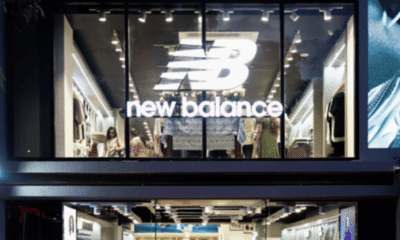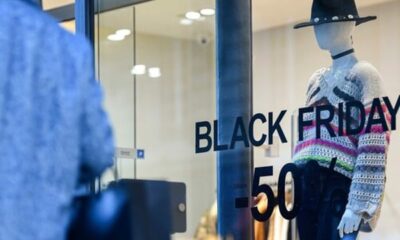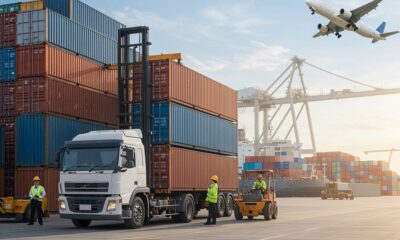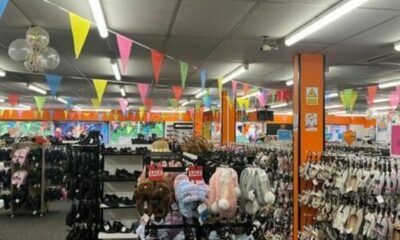Fashion
Rent the Runway to swap debt for equity in revival effort
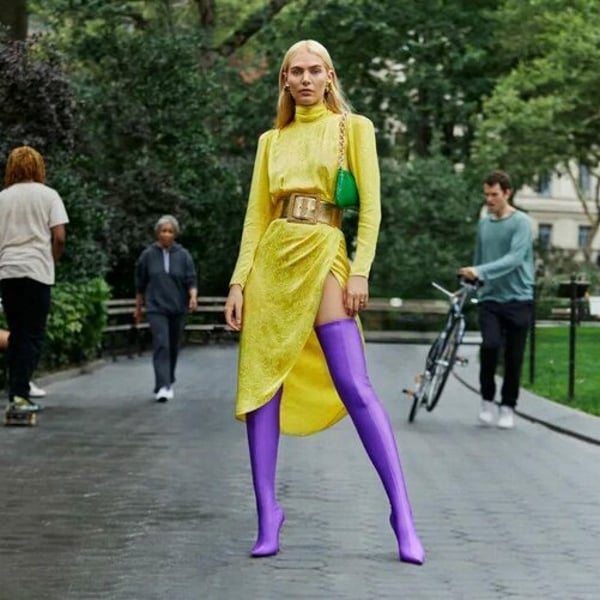
By
Bloomberg
Published
August 21, 2025
Rent the Runway Inc. will hand over a controlling stake in the company as part of a plan to cut debt and grow, after residual effects of the Covid-19 pandemic pushed the firm to the brink of bankruptcy.
The deal, with lender Aranda Principal Strategies and other partners, will wipe more than $240 million of debt from Rent the Runway’s balance sheet, according to an emailed statement. The company, which allows subscribers to rent clothing for the office and events, will have several more years to repay $120 million in remaining borrowings.
Private equity firms Story3 Capital Partners and Nexus Capital Management, along with Aranda, will also inject $20 million into the company as part of the transaction. Aranda was spun off from Singapore’s Temasek Holdings Pte. as a private credit platform earlier this year.
The three investors will receive a majority ownership stake in the company, representatives for Rent the Runway said in an interview — about 86% before accounting for a management incentive plan and a rights offering set to give existing stockholders the opportunity to purchase as much as $12 million of shares.
The offering will be at $4.08 a share, according to the statement. The stock closed Wednesday at $4.485, up from a record low of $3.77 in April. Shares have dropped by two-thirds over the past year. “I’m viewing this as an IPO 2.0 for the company,” Chief Executive Officer Jennifer Hyman said in an interview.
Rent the Runway’s operations and trajectory over the past 18 months encouraged lenders to agree to the plan, which allows management and current owners to retain stakes in the firm, according to Hyman.
“Every single financial metric has substantially improved over last several years, and we were able to do that with shackles on,” Hyman said, referring to the company’s debt load. She acknowledged alternatives included potentially filing for bankruptcy.
Its debt burden grew larger as it started paying interest in kind, which allows borrowers to defer paying interest in cash but tack it on as additional debt due at maturity. The decision was made in light of financial pressures stemming from the pandemic, when people stopped wearing chic work-wear in office and turned to pyjamas at home.
Hyman co-founded Rent the Runway with her business partner Jenny Fleiss in 2009, introducing people to the option of renting clothing for events. The company then started offering a subscription: members can borrow merchandise for a monthly fee.
The firm was valued at $1 billion in 2019, a figure that dropped to $750 million after the pandemic hit in March 2020. Rent the Runway went public in 2021, betting in-person events such as weddings would return, and had more than 147,000 subscribers as of the end of the first quarter.
The company has struggled to revive its business since its public listing amid a subscriber slump. Management executed a reverse stock split in 2024 remain on the Nasdaq. Revenue fell 7.2% in its most recent quarter.
Hyman has been working to revamp Rent the Runway’s operating model. The service has begun sharing revenue with brand partners — made possible in part by its shift to an “asset-light” model.
While Rent the Runway previously owned the inventory on its platform, it more recently shifted to a model that allow brands to put their items on the platform for free and receive a portion of the revenue generated when the goods are rented out. Hyman plans to hone in on that strategy after the recapitalisation and find more companies to work with.
“My primary action post this deal clothing is doing even more deals with brand partners around the world,” said Hyman. “It allows us to invest in even more inventory.”
More merchandise is critical to the company’s revival effort, and management hopes that a larger assortment of items will lure more subscribers. Rent the Runway has added 1,000 new styles and expects to accelerate that process.
Fashion
Eastpak appoints Marie Gras as vice president, global brand

Published
December 1, 2025
A running specialist is all set to drive growth in Eastpak‘s bags business. VF Corp’s luggage brand, a major player in the backpack market in France and across Europe, has appointed a new global brand vice president. Marie Gras, who has served as vice president for running at the French sporting-goods giant Decathlon for nearly two and a half years, is leaving Hauts-de-France to join VF Corp’s Antwerp offices. From Belgium, the group operates Eastpak as well as Kipling (led by Domitille Parent, who previously headed Eastpak).
For Marie Gras, a first challenge looms with last weekend’s reopening of an Eastpak flagship on London’s Carnaby Street. The store is located at 35 Carnaby Street and spans two floors. The brand opened its first-ever store on the London thoroughfare in 2008, in a 170-square-metre space.
Marie Gras helped implement Decathlon’s recent running strategy, in one of the world’s fastest-growing sports. Through its dedicated running brand, Kiprun, Decathlon has launched a running app and, notably, formed agreements with partners in new territories to develop Kiprun spaces beyond its own Decathlon stores. Previously, the executive spent almost eight years at Adidas, most recently overseeing the brand’s activities and events in Paris, one of the key cities in the brand’s global visibility strategy.

Eastpak is one of the luggage brands owned by the VF Corp group, which is currently streamlining its operations. The group also owns Kipling, to which it has given fresh momentum in recent months, as well as JanSport, focused on the US market. Eastpak, which benefits from numerous collaborations with designers and mass-market licences, such as Diesel and Gremlins, was founded in 1952 under the name Eastern Canvas Products. In France and Western Europe, it holds a key position among lower- and upper-secondary students. However, across the functional backpack category as a whole (excluding hiking backpacks), the French brand Cabaïa has gained market share in recent years and now claims category leadership in France.
For Eastpak, the challenges are therefore to scale up its entire bags and luggage range and to strengthen its competitiveness against emerging European players in various markets, such as Rains, Ucon Acrobatics, Qwstion, Kapten & Son, Tucano, Ferrino, Ecoalf, Lefrik, and Sandqvist.
This article is an automatic translation.
Click here to read the original article.
Copyright © 2025 FashionNetwork.com All rights reserved.
Fashion
UK budget mildly deflationary; debt to climb past 106%: Fitch
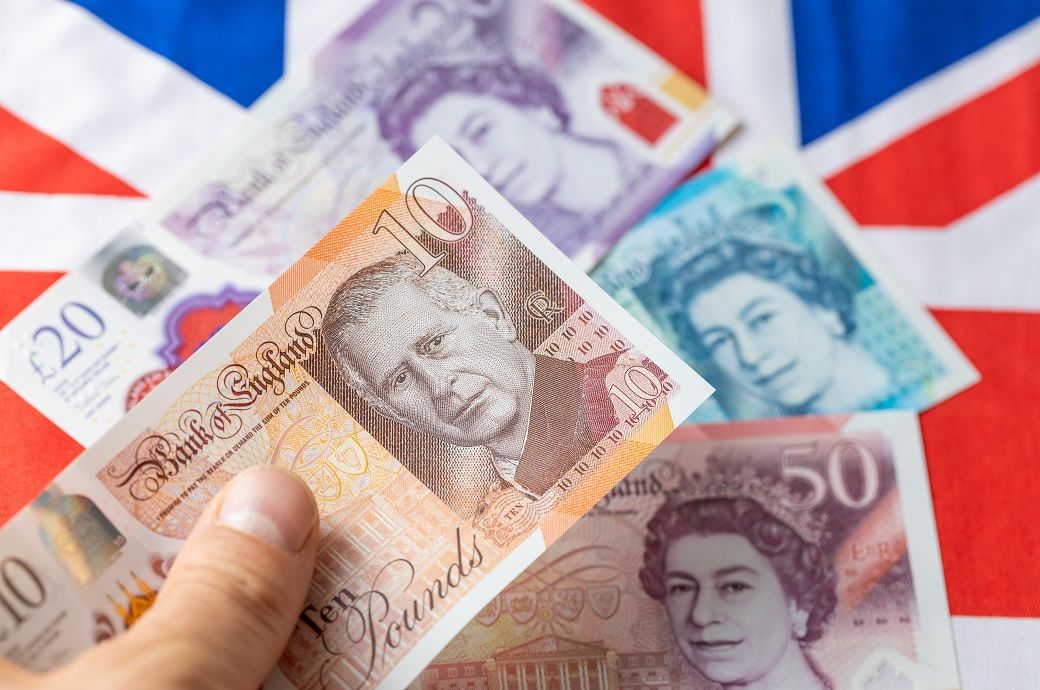
The rating agency said the government’s latest fiscal package is broadly in line with projections made when it affirmed the UK at ‘AA-’/Stable in August but said that the path to consolidation is becoming more challenging.
Fitch Ratings has deemed the budget marginally deflationary, sees debt rising above 106 per cent of GDP by 2027.
The agency said the UK budget broadly aligns with its August deficit projections but signals of rising implementation risks due to back-loaded tax measures and tight spending plans.
New taxes total £26 billion (~$34.37 billion) by FY29, while social spending rises further.
Fitch said the budget’s new tax measures represent £26 billion (~$34.37 billion), or 0.7 per cent of GDP, by fiscal 2029 (FY29), with threshold freezes contributing £8 billion (~$10.57 billion). New Office for Budget Responsibility (OBR) data show general government net borrowing projections 0.2 percentage points (pp) higher on average in 2026–2028 than in March, before falling 0.2 points in 2029, Fitch Ratings said in a release.
Fiscal data since summer remain broadly in line with Fitch’s forecast for the general government deficit to narrow by 0.6 pp in 2025 to 5.3 per cent of GDP and then to 4.4 per cent in 2027, around 0.7 points slower than the government’s new targets.
The agency highlighted material uncertainty around implementation, particularly given the challenging expenditure consolidation outlined in June’s Spending Review, which the budget largely preserves. Real-terms public-sector current spending growth has been tightened further in FY29 to zero, averaging 1.2 per cent in FY26–FY28 compared with 3.4 per cent in FY24–FY25.
Fitch noted that many tax measures are highly back-loaded, coming into effect closer to mid-2029, the latest possible timing of the next general election. A large portion of the tax plan also consists of numerous smaller measures, making the overall impact less transparent than the broader income tax rise the government signalled before the budget. Options to raise further revenue are politically constrained by 2024 election pledges not to increase personal income tax, VAT or National Insurance.
Still, Fitch said Chancellor Rachel Reeves is demonstrating firmer commitment to the fiscal rule than recent predecessors. Last year’s decision to shorten the rolling forecast horizon from five to three years from 2026 has reduced the scope to delay real fiscal adjustment. Aligning fiscal plans more closely with three-year spending reviews also makes it harder to rely on unrealistic spending cuts to fill fiscal gaps.
Budget headroom has increased from £12 billion to £22 billion, around 0.6 per cent of GDP, but Fitch said this remains limited and constrains efforts to improve policy predictability.
Revenue projections have been reshaped by a £16 billion downgrade in expected tax receipts due to lower OBR productivity assumptions, reducing average GDP growth in 2026–2029 by 0.3 pp to 1.5 per cent. Upward revisions to inflation and wage growth more than offset this decline. The OBR’s updated medium-term GDP growth outlook is now closer to Fitch’s trend estimate of 1.4 per cent, of which total factor productivity contributes only 0.3 points.
Although sustained high nominal gilt yields represent a significant fiscal risk, the UK’s long average debt maturity of 13.7 years helps contain projected debt-interest requirements, which Fitch expects to rise modestly to 7.4 per cent of revenue in 2027 from 7 per cent in 2024.
Fitch projects modest GDP outperformance in the near term compared with its August forecast of 1.2 per cent for 2025, although a weakening labour market poses a small downside risk to its 1.2 per cent projection for 2026. The agency judges the budget as marginally deflationary and expects inflation to fall to 2.4 per cent by end-2026.
Fibre2Fashion News Desk (HU)
Fashion
New Balance launches three new stores in Bengaluru, India
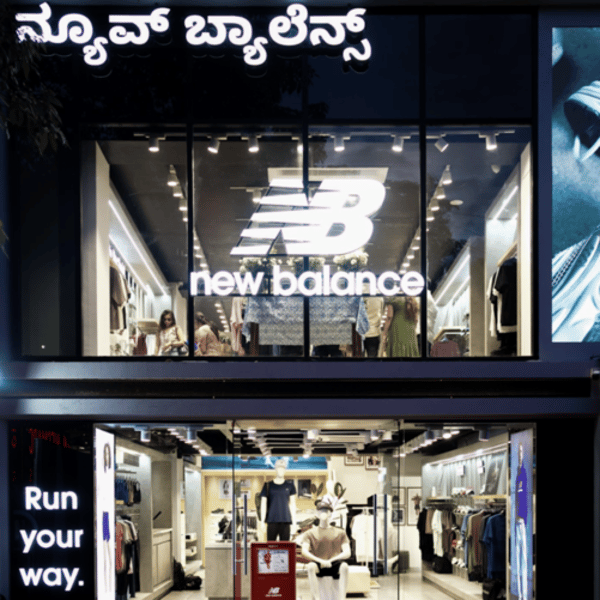
Published
December 1, 2025
Global athletic brand New Balance has expanded its brick-and-mortar footprint in the Bengaluru metro area and opened its doors at three new locations: Indiranagar, HSR, and Forum South Bengaluru.
“We are excited to deepen our presence in Bengaluru- with our stores at Brigade Road, Indiranagar, Forum Mall, and HSR, anchoring us in a city that embodies innovation, culture, and an unwavering passion for fitness,” said New Balance India’s country manager Radeshwer Davar in a press release. “This weekend’s in-store experience and community run allowed us to bring New Balance’s philosophy to life while reinforcing our commitment to building inclusive fitness communities and we want to thank the people of Bengaluru who turned up in great spirit.”
Highlighting its long-term commitment to the Indian market, the new outlets are designed to offer an immersive retail environment and mix craftsmanship with technology. New Balance held an exclusive in-store event at its Indiranagar store, featuring an interactive brand showcase of both footwear and apparel. The New Balance Run Club also put on a community run which saw participation from over 200 individuals.
“Over the past year, we’ve more than doubled our retail footprint in India, and these three new stores are a strong testament to that momentum,” said Davar. “For us, it’s not just about expanding retail locations- it’s about creating experiential centres that bring innovation, performance, and style together under one roof.”
Headquartered in Boston, US, New Balance has been independent since 1906 and employs 10,000 associates worldwide. The business reported a global sales total of 7.8 billion dollars in 2024 and counts five athletic footwear factories in New England, US and one in Flimby, UK.
Copyright © 2025 FashionNetwork.com All rights reserved.
-

 Sports1 week ago
Sports1 week agoWATCH: Ronaldo scores spectacular bicycle kick
-

 Entertainment1 week ago
Entertainment1 week agoWelcome to Derry’ episode 5 delivers shocking twist
-

 Politics1 week ago
Politics1 week agoWashington and Kyiv Stress Any Peace Deal Must Fully Respect Ukraine’s Sovereignty
-

 Business1 week ago
Business1 week agoKey economic data and trends that will shape Rachel Reeves’ Budget
-

 Politics1 week ago
Politics1 week ago53,000 Sikhs vote in Ottawa Khalistan Referendum amid Carney-Modi trade talks scrutiny
-

 Tech6 days ago
Tech6 days agoWake Up—the Best Black Friday Mattress Sales Are Here
-

 Fashion1 week ago
Fashion1 week agoCanada’s Lululemon unveils team Canada kit for Milano Cortina 2026
-

 Tech1 day ago
Tech1 day agoGet Your Steps In From Your Home Office With This Walking Pad—On Sale This Week




